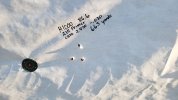Ok, examples:
243, 243 AI SAAMI spec is .469 at the .200 line
Lapua & PMC (other European brands also) New brass is .470, brand new
Change reamer print to .4723 at a minimum, thicker necks wall thickness to be taken into account
Same thing on Lapua BR brass with a multitude of variants, web dimension at the .200 mark is too small, causing stiff bolt lift and "clickers" abound.
Alpha Brand of 6 BR and variants have their own reamer spec due to minor differences than Lapua
Same occurrence with Lapua 30/06 brass and SAAMI spec chambers,
Same thing with RWS 280 brass and SAAMI factory chambers
223 Lapua brass is thicker in the web and in the neck wall thickness and will not work well in SAAMI Match chambers.
and on and on
I am waiting for some new AGD 7 Mag brass with fingers crossed, hoping it is not too large. A pard was having some trouble, but I helped him out with an extra small base sizer, but he says the brass is super tough.
243, 243 AI SAAMI spec is .469 at the .200 line
Lapua & PMC (other European brands also) New brass is .470, brand new
Change reamer print to .4723 at a minimum, thicker necks wall thickness to be taken into account
Same thing on Lapua BR brass with a multitude of variants, web dimension at the .200 mark is too small, causing stiff bolt lift and "clickers" abound.
Alpha Brand of 6 BR and variants have their own reamer spec due to minor differences than Lapua
Same occurrence with Lapua 30/06 brass and SAAMI spec chambers,
Same thing with RWS 280 brass and SAAMI factory chambers
223 Lapua brass is thicker in the web and in the neck wall thickness and will not work well in SAAMI Match chambers.
and on and on
I am waiting for some new AGD 7 Mag brass with fingers crossed, hoping it is not too large. A pard was having some trouble, but I helped him out with an extra small base sizer, but he says the brass is super tough.

